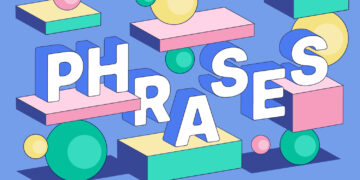Hello, In today’s digitally-driven academic environment, software literacy has become as critical as subject knowledge. From writing research papers and attending virtual lectures to managing group projects and analysing data, students need more than notebooks and textbooks—they need a toolbox of digital solutions.
Whether you’re a high school student preparing for university or a postgraduate researcher navigating complex data, these software tools are not just helpful—they’re essential.
Here are ten software packages that every student should consider mastering in 2025:
1. Google Drive & Google Workspace
Google Drive remains a cornerstone for student productivity. It offers free cloud storage alongside collaborative tools like Docs, Sheets, and Slides. These applications are particularly useful for group work, presentations, and file sharing, making remote learning and teamwork seamless.
2. Microsoft Office Online
Microsoft’s cloud-based suite provides access to Word, Excel, PowerPoint, and OneNote—staples in education. Students can collaborate in real time, access files from any device, and use the platform for both academic and career-preparation tasks. The online version is lighter than the desktop suite but still powerful enough for daily use.
3. LibreOffice
A strong open-source alternative to Microsoft Office, LibreOffice supports Word and Excel formats and provides a familiar user interface. It’s ideal for students who need full functionality without subscription fees. It’s also compatible across multiple platforms.
4. WPS Office
WPS Office combines Word, Excel, and PowerPoint capabilities in a single app with added features such as PDF conversion, charting tools, and design templates. Its compatibility with Microsoft Office files makes it a reliable, budget-friendly choice.
5. Zoom
Even as in-person learning returns, Zoom remains relevant for virtual classes, group discussions, and academic webinars. With the ability to host up to 100 participants, share screens, and record sessions, it continues to support hybrid learning models.
6. Skype
Skype offers free video and voice calling, instant messaging, and screen sharing—making it a go-to option for collaborative learning. It also supports multi-platform use, which allows students to connect from anywhere.
7. Facebook Messenger (Standalone App)
With its dedicated desktop and mobile versions, Facebook Messenger has evolved into a focused communication platform. Students can now engage in project discussions without the distractions of the main Facebook feed, making it suitable for peer collaboration.
8. Evernote
A favourite for notetaking and organising thoughts, Evernote’s “Spaces” feature enables collaborative research and brainstorming. Its cross-platform functionality allows seamless transitions between mobile and desktop, ideal for students on the move.
9. Notion
More than a note-taking app, Notion is a digital workspace where students can create databases, publish class resources, and organise research. It supports embedded media and web content, making it a favorite for student creators and researchers.
10. Microsoft OneNote
OneNote mimics the structure of physical notebooks but offers much more—embedding multimedia, drawing, and categorising content into hierarchical sections. Its deep integration with other Microsoft products makes it a powerful tool for organising coursework.
Why These Tools Matter
In a global learning economy, digital fluency gives students a competitive edge. Proficiency in these tools can significantly improve academic performance, streamline group work, and enhance career readiness. More importantly, they equip students with the digital agility necessary for today’s hybrid learning environments and tomorrow’s tech-driven workplaces.
“Software tools are no longer just productivity enhancers—they’re academic enablers,” says Amina Yusuf, an ICT-in-Education advocate based in Lagos.
As universities and scholarship providers increasingly assess digital competency, mastering these tools isn’t optional; it’s essential.














































































 EduTimes Africa, a product of Education Times Africa, is a magazine publication that aims to lend its support to close the yawning gap in Africa's educational development.
EduTimes Africa, a product of Education Times Africa, is a magazine publication that aims to lend its support to close the yawning gap in Africa's educational development.

